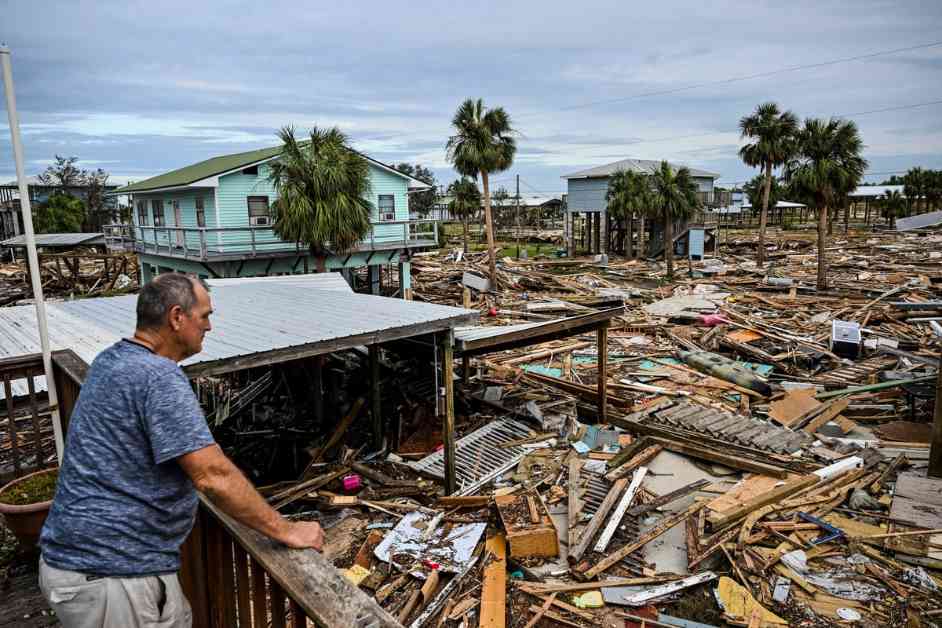The conservative blueprint for a second Trump administration outlines plans to weaken the government’s response to disasters by cutting public rebuilding funds and dissolving federal flood insurance. This could leave survivors of disasters like Hurricane Helene struggling to rebuild their homes, especially as the costs of catastrophes increase due to rising temperatures and urban development.
Project 2025, a comprehensive policy playbook crafted by allies and former advisors of ex-President Donald Trump, proposes ending disaster-preparation grants, reducing aid after smaller disasters, and phasing out the program that offers most of the nation’s flood insurance under the Federal Emergency Management Agency (FEMA).
Critics of the plan, like Brett Hartl from the Center for Biological Diversity Action Fund, argue that it would leave the most vulnerable without access to flood insurance, making it impossible for them to recover from disasters like Hurricane Helene. The proposal to eliminate the National Flood Insurance Program and rely on the private insurance industry has raised concerns about the lack of coverage for high-risk areas.
Following Hurricane Helene, questions have arisen about the disaster policies that Trump might implement if reelected. The Trump campaign has distanced itself from Project 2025 in response to criticism from Vice President Kamala Harris, who has raised concerns about limiting disaster aid.
One of the most controversial proposals in Project 2025 is the dismantling of FEMA’s flood insurance program, which currently provides coverage for almost all flood-related damages in the U.S. This move could leave millions of households without the financial resources needed for recovery, according to experts in flood insurance and disaster management.
The plan to shift towards private insurance for flood coverage has been deemed unrealistic by many, as the private market is often reluctant to offer coverage in high-risk areas. The National Flood Insurance Program was established in 1968 after private insurers refused to cover flood damage, highlighting the challenges of relying solely on private insurance.
As FEMA struggles to cover costs and faces mounting debt from previous disasters, the proposed overhaul of the agency’s disaster aid policies has come under scrutiny. Critics argue that the plan to reduce funding for states after smaller disasters could hinder communities’ ability to recover and rebuild.
While some aspects of Project 2025 aim to incentivize states to adopt stricter building codes and improve disaster preparedness, others have been met with criticism for potentially limiting resources for communities in need. The debate over the future of FEMA and disaster aid continues to be a contentious issue as the U.S. grapples with the increasing frequency and intensity of natural disasters.










